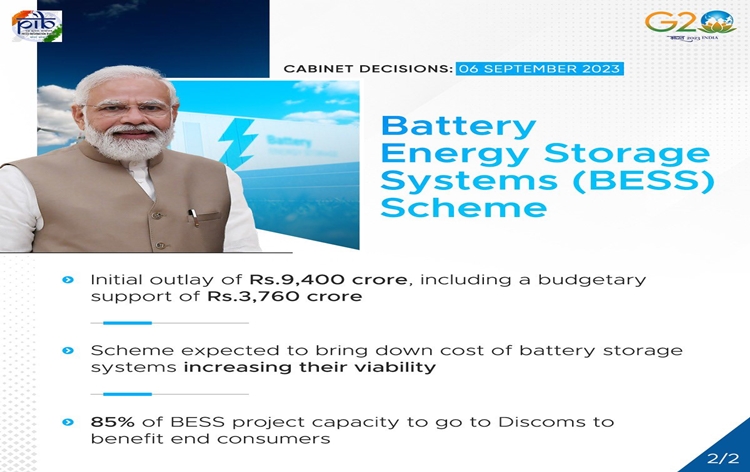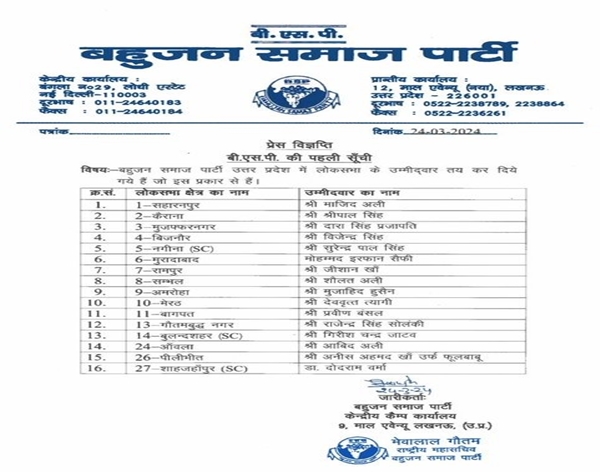The Government today approved the Scheme for Viability Gap Funding ( VGF ) for the development of Battery Energy Storage Systems ( BESS). Briefing media after the Cabinet meeting in New Delhi today, Information and Broadcasting Minister Anurag Singh Thakur said, the scheme envisages the development of four thousand Mega Watt hour of BESS projects by 2030-31, with the financial support of up to 40 percent of the capital cost as budgetary support. He said, it has an initial outlay of about 9,400 crore rupees including budgetary support of 3,760 crore rupees. He informed that the VGF shall be disbursed in five tranches linked with the various stages of implementation of BESS projects.
The Minister added, to ensure that the benefits of the scheme reach the consumers, a minimum of 85 percent of the BESS project capacity will be made available to Distribution Companies (Discoms). Mr. Thakur said the Government remains committed to promoting clean and green energy solutions, and the BESS Scheme is a significant step towards achieving this vision. He added, it will not only enhance the integration of renewable energy into the electricity grid but also minimise wastage while optimising the utilisation of transmission networks.
In another decision, The Government also approved 1164 crore rupees as an additional fund requirement under the Industrial Development Scheme, 2017 for Himachal Pradesh and Uttarakhand. The Minister said, the funds will help meet the committed liabilities under the scheme up to 2028-29. The Government announced Industrial Development Scheme, in 2017 for Himachal Pradesh and Uttarakhand. Under this scheme, the total financial outlay was 131.90 crore rupees, which was exhausted during the financial year 2021-22.
The Government has announced the Industrial Development Scheme, in 2017 for Himachal Pradesh and Uttarakhand. Under this scheme, the total financial outlay was 131.90 crore rupees, which was exhausted during the financial year 2021-22. Mr Thakur said, it will generate direct employment opportunities for about 48607 people by 774 registered units.















